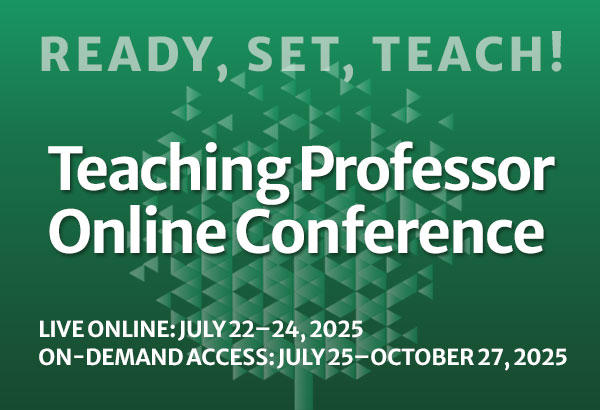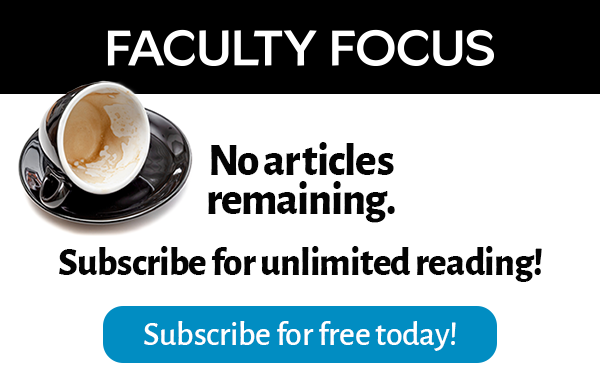We begin each semester on a different note than we end on. The early weeks hold promise and high hopes, both often curtailed when the first assignments are graded. The final weeks find us somewhere between being reluctant or relieved to see a class move on. There is an inexplicable but evident interaction between our teaching persona and the persona a class develops throughout a semester. Some structural factors influence both: among them—the type and level of a course, the discipline, the time of day, and whether the students are a cohort or a unique collection of individuals.
Calling attention to the structure of the semester: In research that tugs on the edges of something that we take for granted, Mann and colleagues (1970) describe how a structural arc in a semester influences the persona of a class and its faculty. Duffy & Jones (1995) built on Mann’s work by addressing the predictable swings of attitudes and emotions during three phases of a semester. There are no discrete boundaries nor fixed lengths of time in the three phases, and their generalizations have differing degrees of influence depending on the personas of the teacher and class. However, once each phase is understood, planning for them can occur.
Developing a community during the opening weeks: Most faculty and students approach the opening weeks of a semester with beliefs about fresh beginnings; students will do better and teachers will be better. These views influence how the community for learning evolves and can be used in building that community.
Implications for practice: Pursuing questions like the following generates mutual respect and trust during the period when the persona of a class is developing: What does it mean to be a learner in this course? What will it take to be a teacher in this course? What is the starting place? What experiences with and views of the content are students bringing with them? How do they want to be learners in the class? What expectations do they have of themselves? Of the teacher? What expectations does the teacher have of them? Of himself or herself?
The strength of the learning community built in the opening weeks can influence the inevitable impact of the midsemester doldrums.
Revitalizing a class during the midsemester doldrums: As the semester marches on, teachers and students realize that the optimism and expectations felt during the opening weeks will not all be realized. We have all experienced this period of the “doldrums” (Duffy & Jones) that challenges whatever sense of community was developed earlier. With both students and faculty feeling overworked and even a degree of “deflation and defensiveness,” Duffy and Jones acknowledge “students and faculty…rely on each other for the stimulation to move the course forward” (p. 162). This down period can impede learning. What can be done to mitigate its effects?
Implications for practice: Some faculty have found directly acknowledging the “rhythms of the semester” with a class conversation helps confront its challenges. Others revitalize the learning environment by interjecting an unexpected approach: inviting a guest speaker, using an unusual resource, giving an unexpected assignment—doing something that disrupts the routine. One physics colleague presents a “Gee Whiz” lecture that provides illustrations of unusual applications of theories within the field. A sociology colleague has students visit a local bookstore and survey books in the parenting section that present different views of “childhood” in titles and tables of contents.
Achieving closure during the concluding weeks: The final phase of a course features a general recommitment to course goals and, as end-of-semester deadlines approach, a slowly building tension. Stress levels increase for faculty and students as time diminishes for teaching and learning content and for completing and grading assignments. On both sides of the desk procrastinators face a brick wall and perfectionists face inevitable disappointment.
Implications for practice: Acknowledging these challenges provides an opportunity to address them. Doing so enables conversations either online or in class about productive ways to study. A syllabus revisit can direct a conversation about key content points students now identify with each segment. Providing opportunities for students to recognize not just what they learned but how they learned it gets everyone focused on what was accomplished rather than what was left undone. Acknowledgment, joint pursuit of concrete evidence of progress, and identification of the best avenues for concluding the semester can help achieve positive closure.
The personas of the teacher and the class are conduits for learning: The arc of the semester often catches students off guard, and they’re surprised that faculty not only notice the arc, but we experience it too. Using our understanding of the effects and predictability of the arc, we can help students effectively navigate through the highs and lows of a course.
Persona series
This is the fourth in a series of five articles that explore teaching persona—what it is and what influences its evolution. Review the previous articles:
- How Do I Make Choices About Who I Am as a Teacher? – Oct. 5, 2015
- Six Myths About a Teaching Persona – Oct. 26, 2015
- A New Twist on End-of-Semester Evaluations – Nov. 23, 2015
On February 29, the series concludes with a look at how the “signature pedagogy” of a discipline influences the persona of a class and its teacher.
References:
Duffy, D. K. & Jones, J. W. Teaching Within the Rhythms of the Semester. San Francisco: Jossey-Bass, 1995.
Mann, R. D., Arnold, S. M., Binder, J., Cytrunbaum, S., Ringwald, J. & Rosenwein, R. The College Classroom: Conflict, Change, and Learning. New York: Wiley, 1970.
This article first appeared in Faculty Focus on January 18, 2016. © Magna Publications. All rights reserved.






